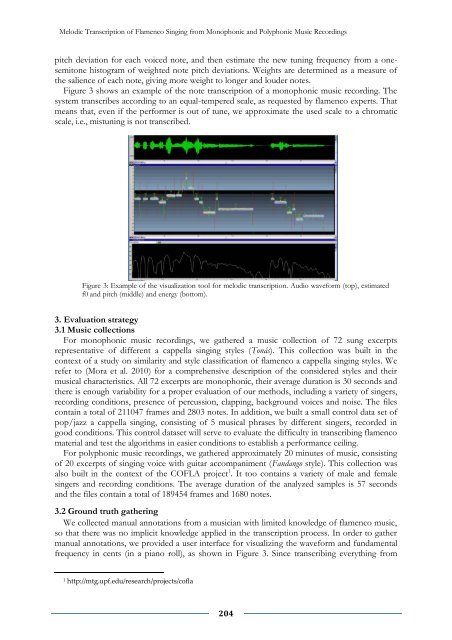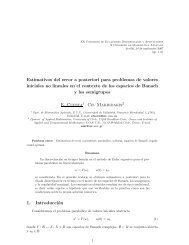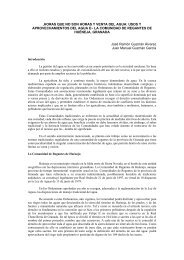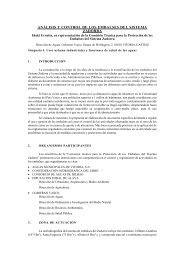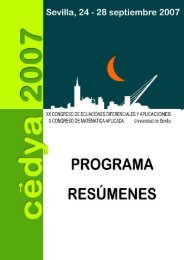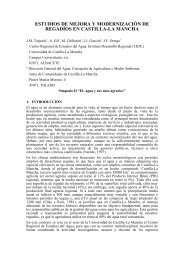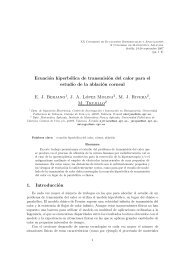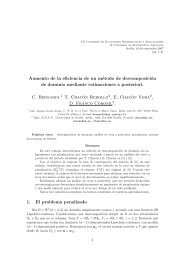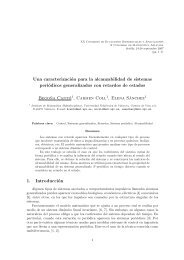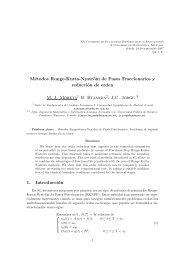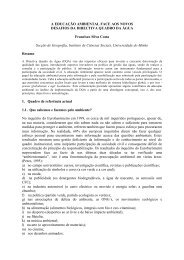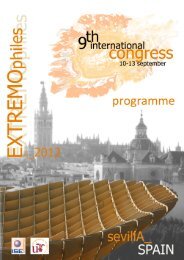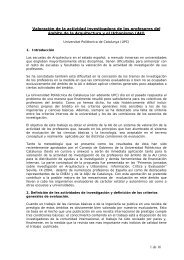LIBRO DE ACTAS (pdf) - Universidad de Sevilla
LIBRO DE ACTAS (pdf) - Universidad de Sevilla
LIBRO DE ACTAS (pdf) - Universidad de Sevilla
You also want an ePaper? Increase the reach of your titles
YUMPU automatically turns print PDFs into web optimized ePapers that Google loves.
Melodic Transcription of Flamenco Singing from Monophonic and Polyphonic Music Recordings<br />
pitch <strong>de</strong>viation for each voiced note, and then estimate the new tuning frequency from a onesemitone<br />
histogram of weighted note pitch <strong>de</strong>viations. Weights are <strong>de</strong>termined as a measure of<br />
the salience of each note, giving more weight to longer and lou<strong>de</strong>r notes.<br />
Figure 3 shows an example of the note transcription of a monophonic music recording. The<br />
system transcribes according to an equal-tempered scale, as requested by flamenco experts. That<br />
means that, even if the performer is out of tune, we approximate the used scale to a chromatic<br />
scale, i.e., mistuning is not transcribed.<br />
Figure 3: Example of the visualization tool for melodic transcription. Audio waveform (top), estimated<br />
f0 and pitch (middle) and energy (bottom).<br />
3. Evaluation strategy<br />
3.1 Music collections<br />
For monophonic music recordings, we gathered a music collection of 72 sung excerpts<br />
representative of different a cappella singing styles (Tonás). This collection was built in the<br />
context of a study on similarity and style classification of flamenco a cappella singing styles. We<br />
refer to (Mora et al. 2010) for a comprehensive <strong>de</strong>scription of the consi<strong>de</strong>red styles and their<br />
musical characteristics. All 72 excerpts are monophonic, their average duration is 30 seconds and<br />
there is enough variability for a proper evaluation of our methods, including a variety of singers,<br />
recording conditions, presence of percussion, clapping, background voices and noise. The files<br />
contain a total of 211047 frames and 2803 notes. In addition, we built a small control data set of<br />
pop/jazz a cappella singing, consisting of 5 musical phrases by different singers, recor<strong>de</strong>d in<br />
good conditions. This control dataset will serve to evaluate the difficulty in transcribing flamenco<br />
material and test the algorithms in easier conditions to establish a performance ceiling.<br />
For polyphonic music recordings, we gathered approximately 20 minutes of music, consisting<br />
of 20 excerpts of singing voice with guitar accompaniment (Fandango style). This collection was<br />
also built in the context of the COFLA project 1 . It too contains a variety of male and female<br />
singers and recording conditions. The average duration of the analyzed samples is 57 seconds<br />
and the files contain a total of 189454 frames and 1680 notes.<br />
3.2 Ground truth gathering<br />
We collected manual annotations from a musician with limited knowledge of flamenco music,<br />
so that there was no implicit knowledge applied in the transcription process. In or<strong>de</strong>r to gather<br />
manual annotations, we provi<strong>de</strong>d a user interface for visualizing the waveform and fundamental<br />
frequency in cents (in a piano roll), as shown in Figure 3. Since transcribing everything from<br />
1 http://mtg.upf.edu/research/projects/cofla<br />
204


